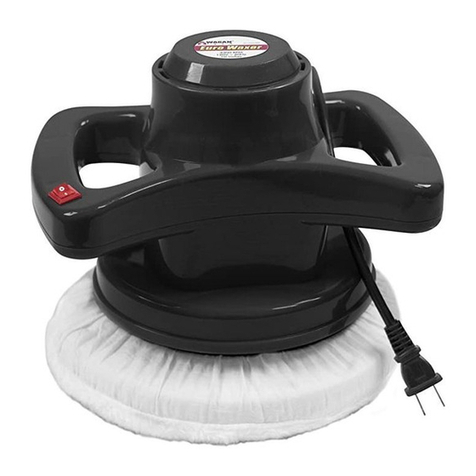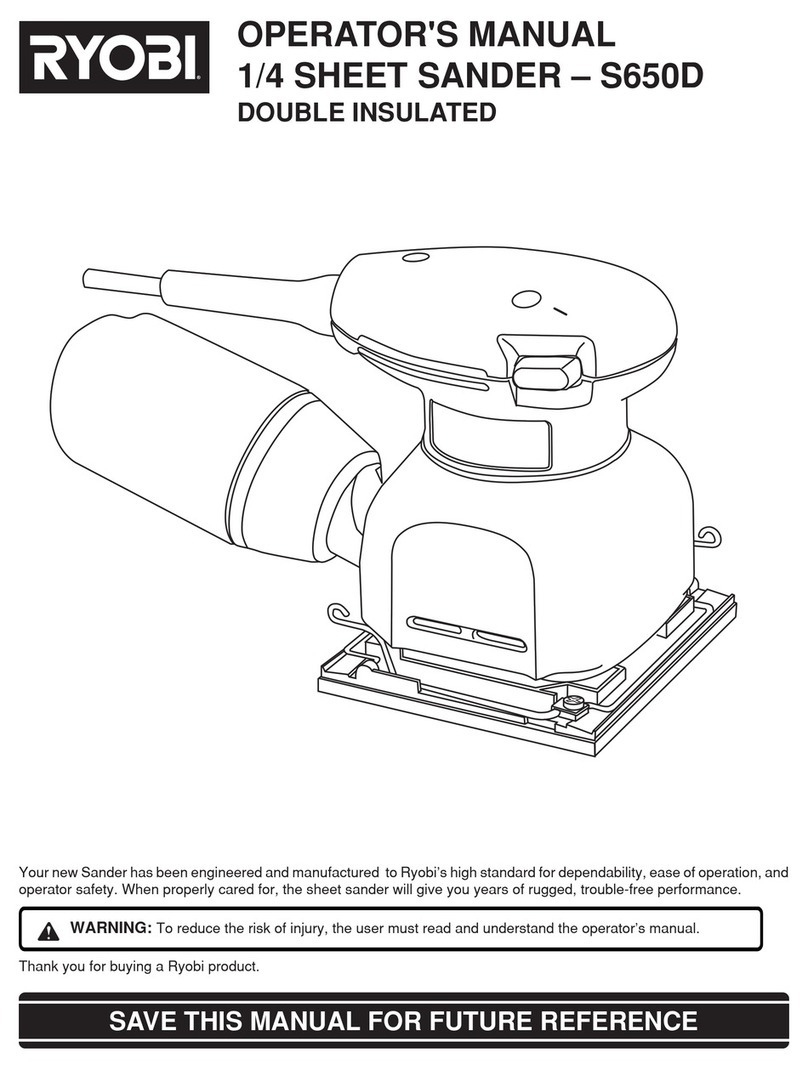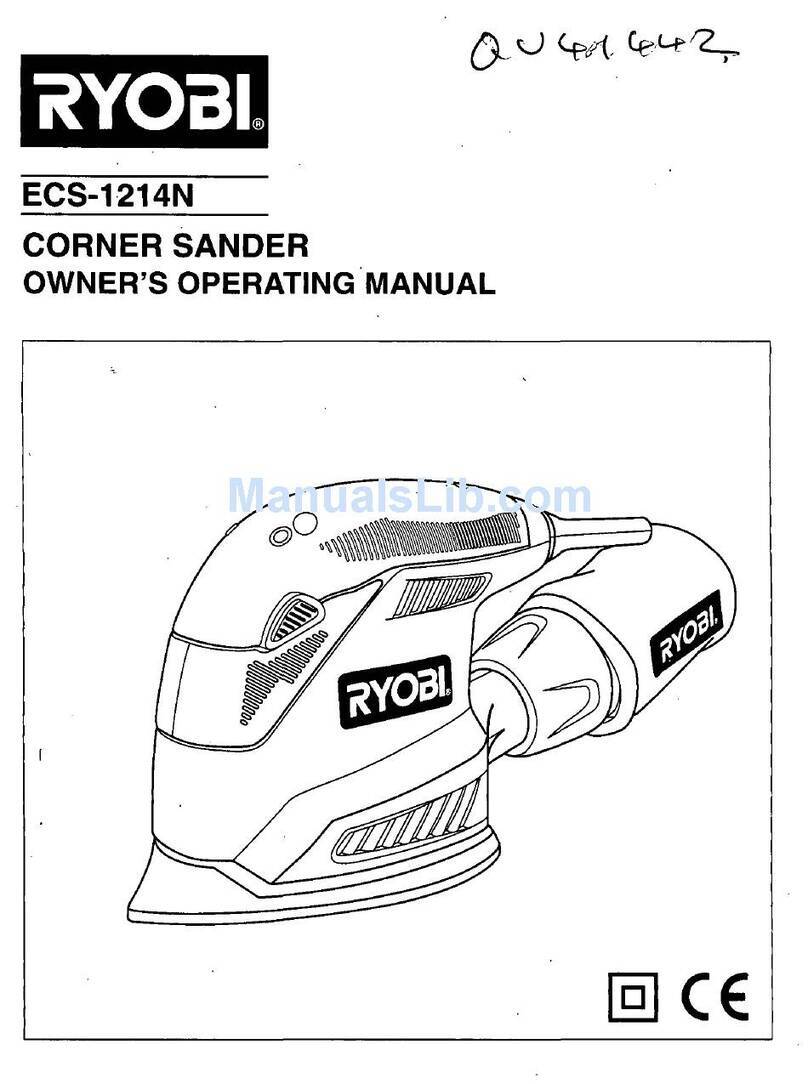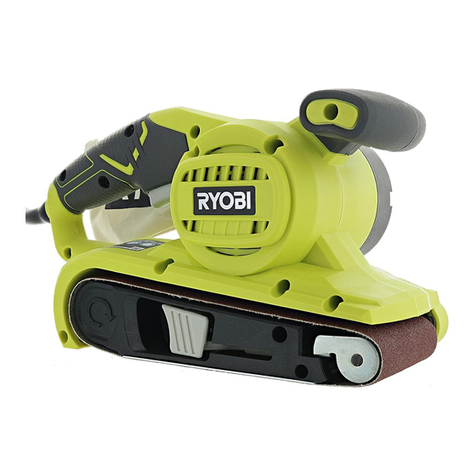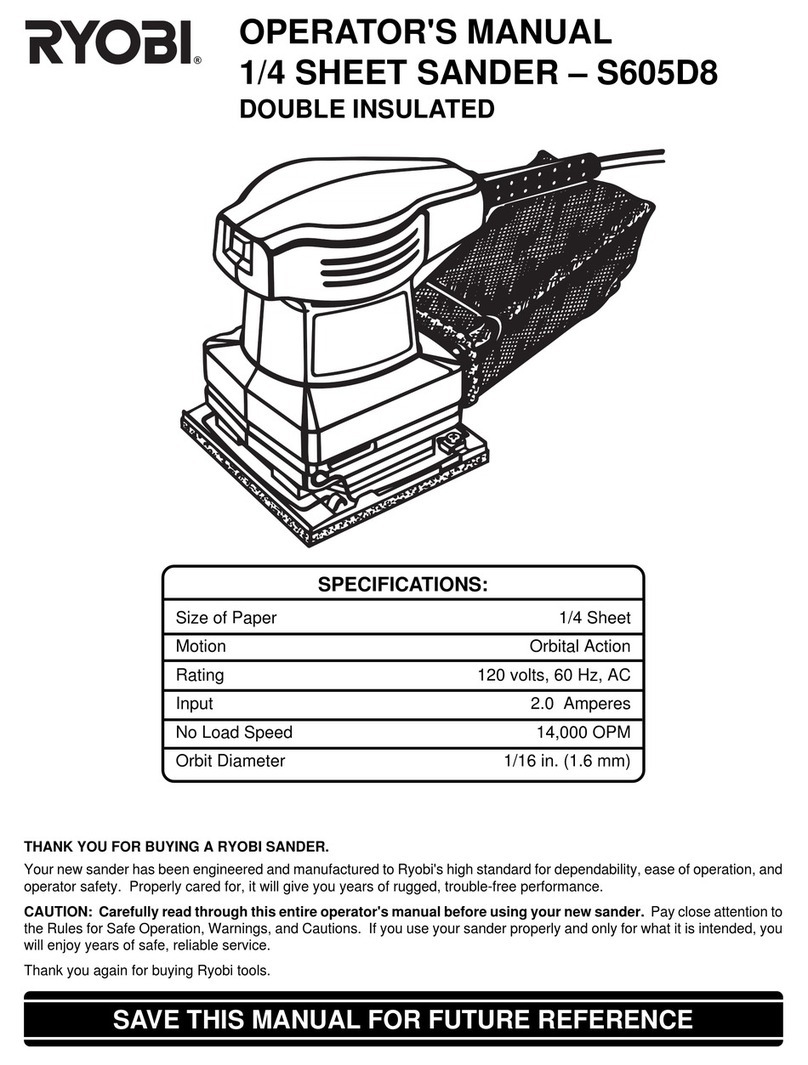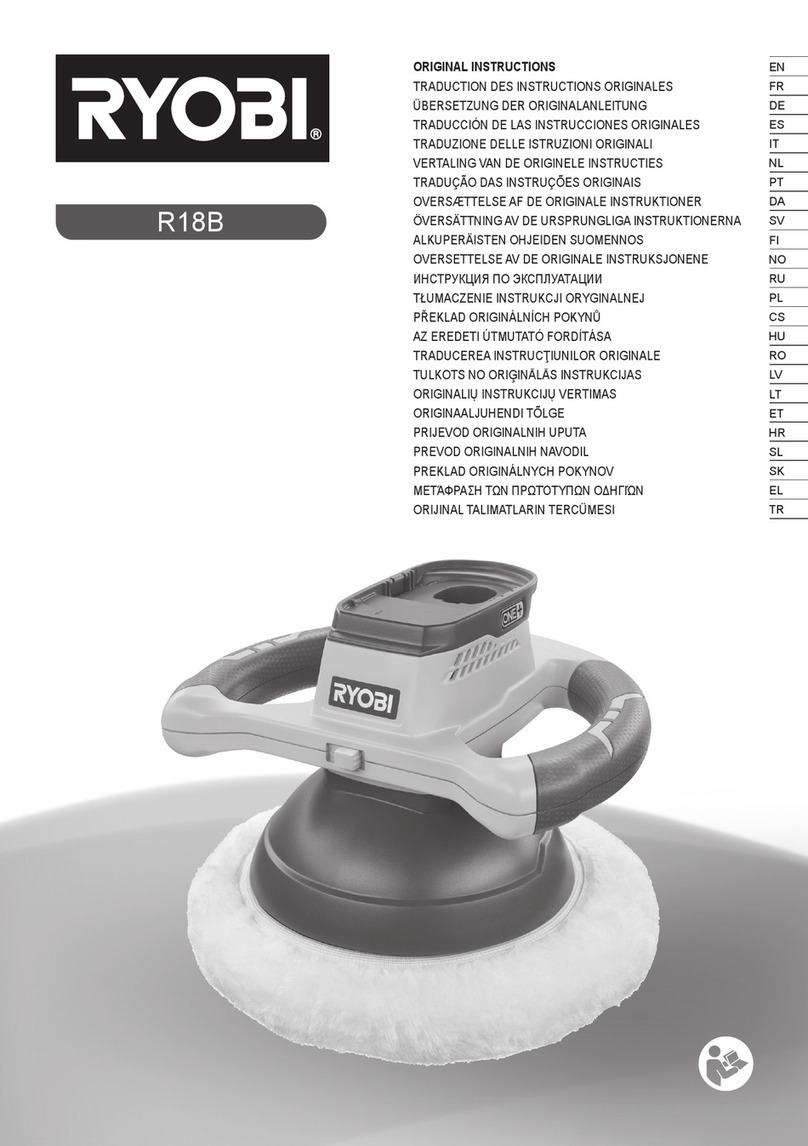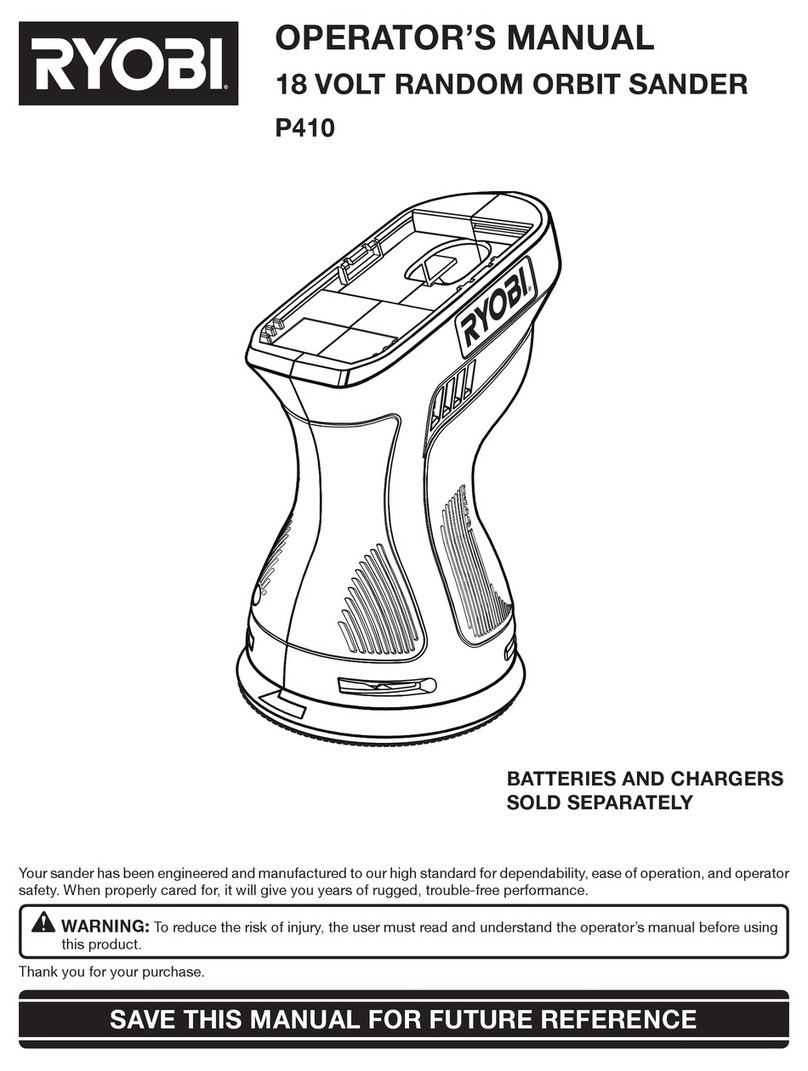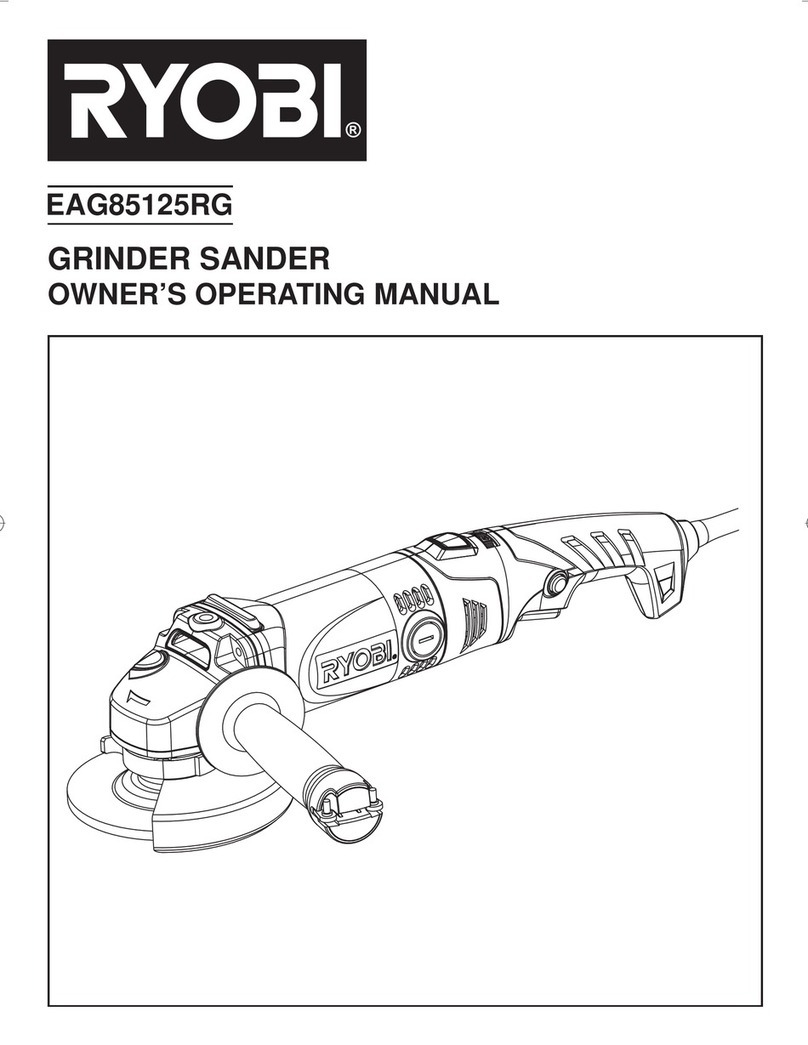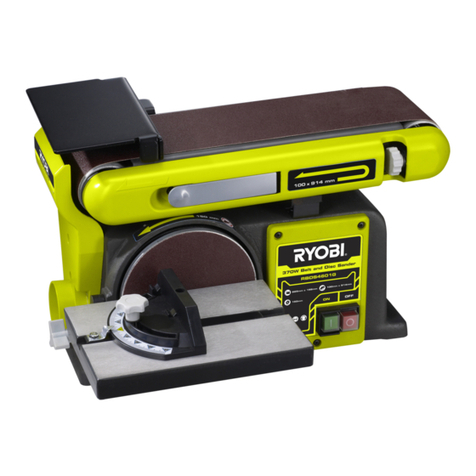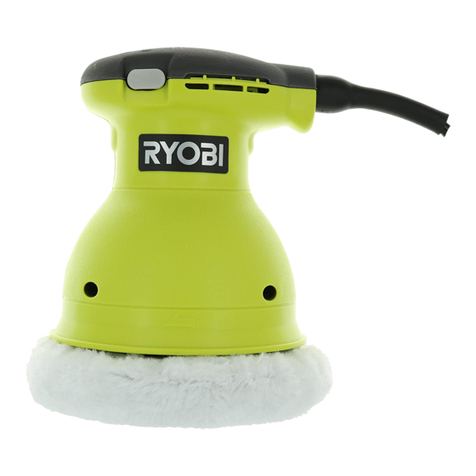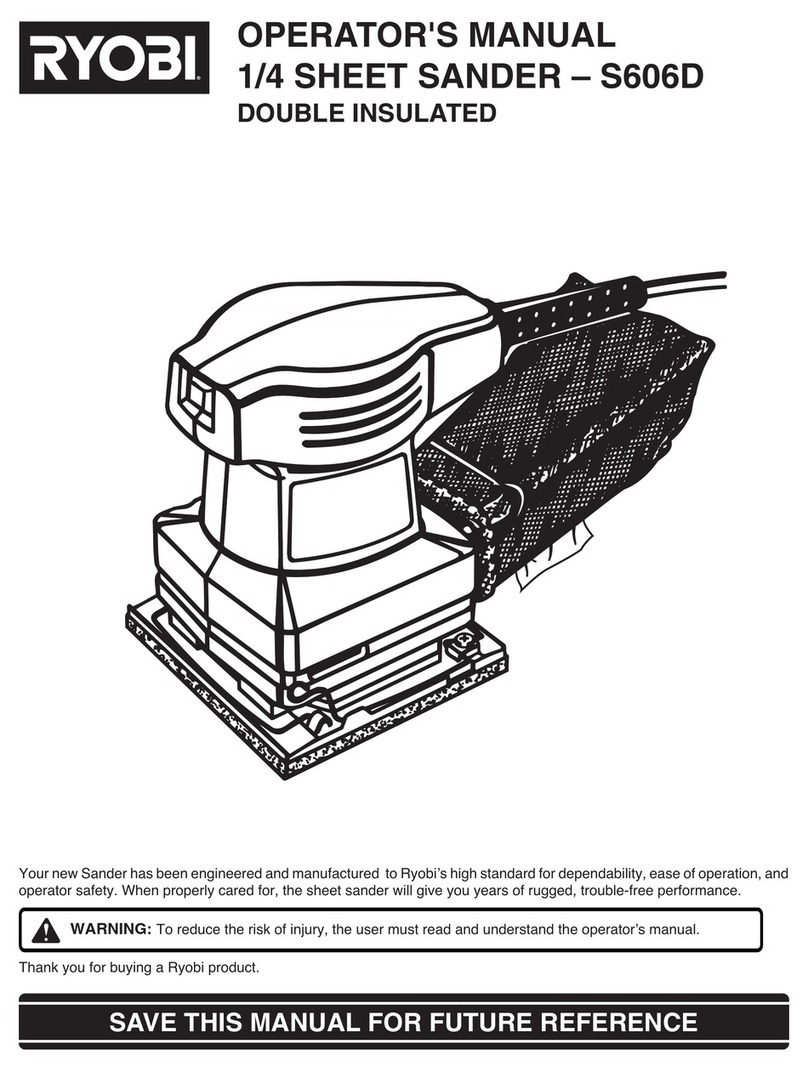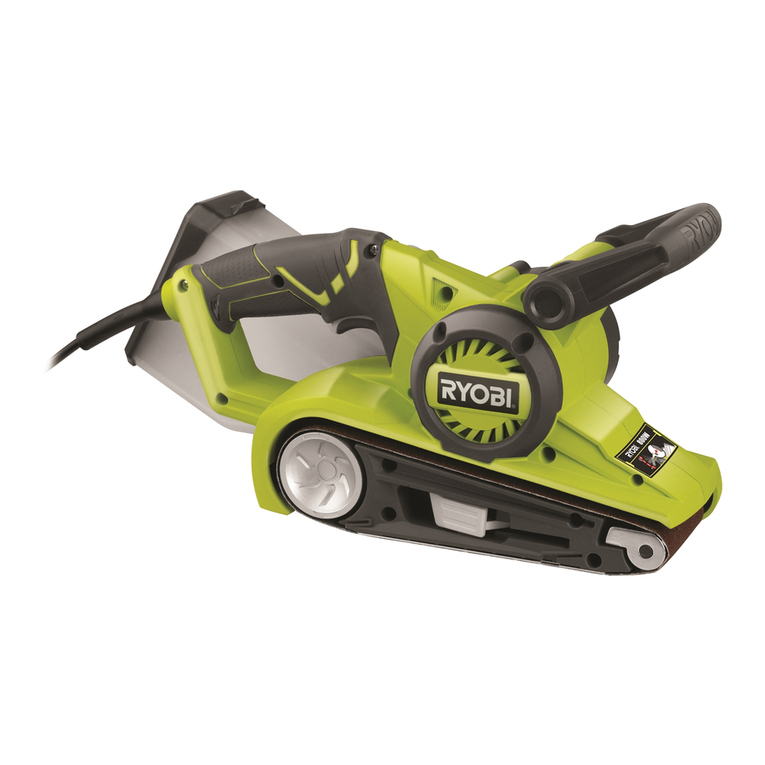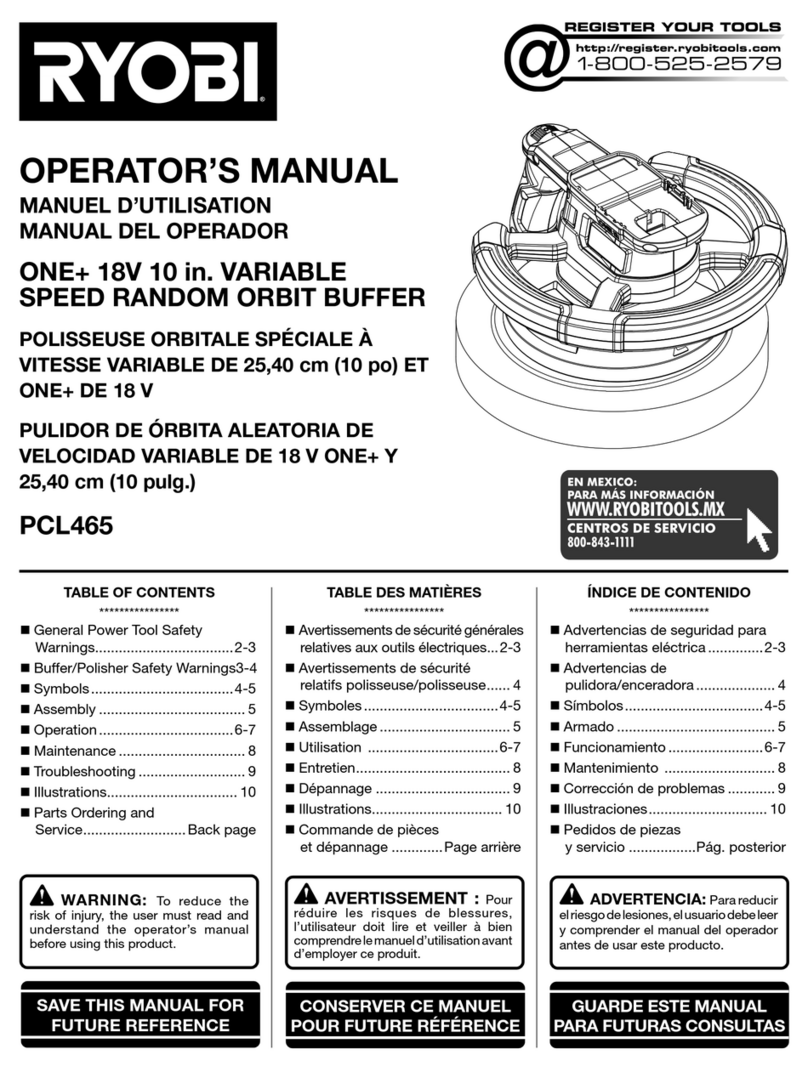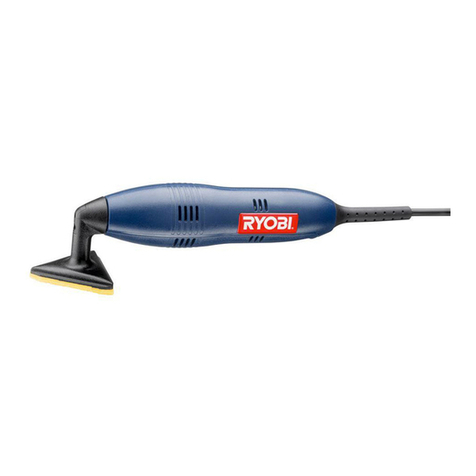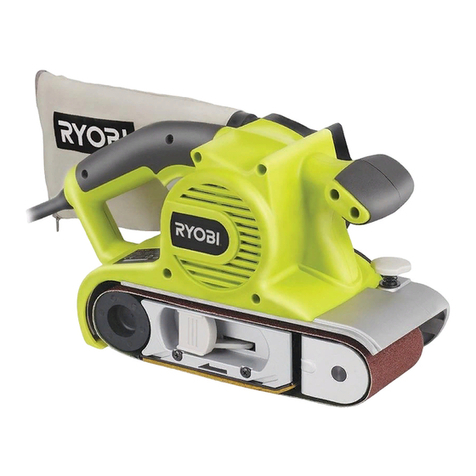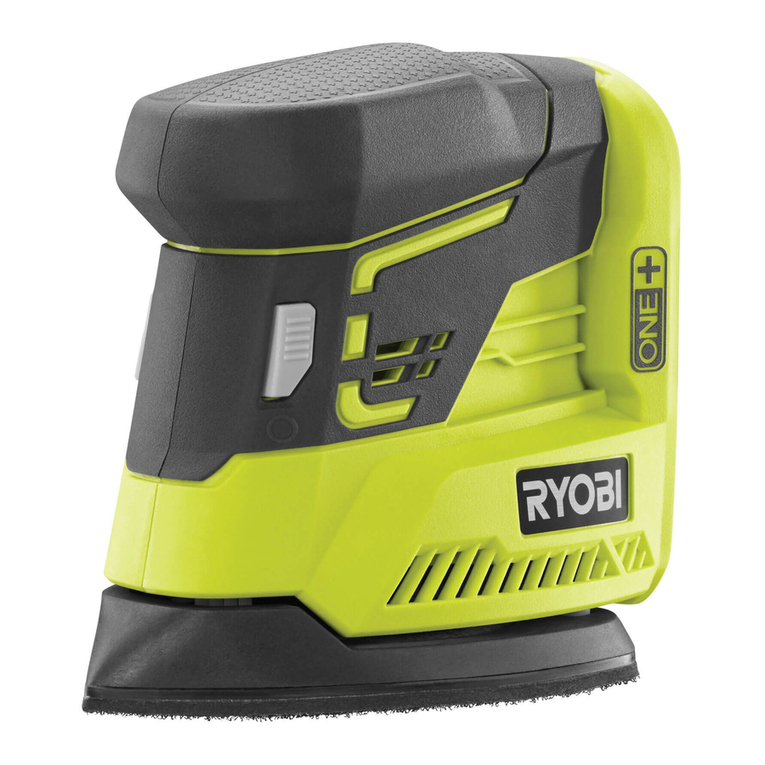
Deutsch
6
Sicherheit, Leistung und Zuverlässigkeit hatten oberste
Priorität bei dem Design Ihres Polierers.
BESTIMMUNGSGEMÄSSE VERWENDUNG
Der Polierer ist ausschließlich zur Nutzung durch
Erwachsene konzipiert, die die Anleitung und die
Sicherheitshinweise in diesem Handbuch gelesen
und verstanden haben und als für ihre Handlungen
verantwortlich betrachtet werden können.
Das Produkt ist ausschließlich zum Polieren von Autos,
Booten, Wohnmobilen, Wassefahrzeugen, Parkett und
großen Möbeln vorgesehen.
Das Gerät ist ausschließlich zur privaten Nutzung geeignet.
Benutzen Sie das Produkt nicht für andere Aufgaben, als
die genannten bestimmungsgemäßen Verwendungen.
Der Einsatz des Werkzeugs für Arbeiten, für die es nicht
vorgesehen ist, kann zu gefährlichen Situationen führen.
WARNUNG
Lesen Sie aufmerksam alle mit diesem Werkzeug
gelieferten Warnungen, Anweisungen und
Spezifikationen, beziehen Sie sich auf die
Illustrationen. Die Nichtbeachtung der weiter unten
aufgeführten Anweisungen kann Unfälle wie Brände,
Elektroschocks und/oder schwere Körperverletzungen
zur Folge haben.
Bewahren Sie diese Sicherheitshinweise und
Anweisungen für einen späteren Gebrauch gut auf.
SICHERHEITSHINWEISE ZUR POLIERMASCHINE
■Der Umgebungstemperaturbereich für das Werkzeug
während des Betriebs liegt zwischen 0 °C und 40 °C.
■Der Umgebungstemperaturbereich für die Lagerung
des Werkzeugs liegt zwischen 0 °C und 40 °C.
■Der empfohlene Umgebungstemperaturbereich für das
Ladesystem während des Ladevorgangs liegt zwischen
10 °C und 38 °C.
WEITERE SICHERHEITSHINWEISE ZUM AKKU
WARNUNG
Um die durch einen Kurzschluss verursachte
Gefahr eines Brandes, von Verletzungen oder
Produktbeschädigungen zu vermeiden, tauchen Sie
das Werkzeug, den Wechselakku oder das Ladegerät
nicht in Flüssigkeiten ein und sorgen Sie dafür, dass
keine Flüssigkeiten in die Geräte und Akkus eindringen.
Korrodierende oder leitfähige Flüssigkeiten, wie
Salzwasser, bestimmte Chemikalien und Bleichmittel
oder Produkte, die Bleichmittel enthalten, können einen
Kurzschluss verursachen.
■Der Umgebungstemperaturbereich für die Batterie
während des Gebrauchs liegt zwischen 0 °C und 40 °C.
■Der Umgebungstemperaturbereich für die Lagerung
der Batterie liegt zwischen 0 °C und 20 °C.
TRANSPORT VON LITHIUM AKKUS
Transportieren Sie den Akku gemäß Ihren örtlichen und
nationalen Bestimmungen und Regeln.
Befolgen Sie alle besonderen Anforderungen für
Verpackung und Beschriftung, wenn Sie Akkus von
Dritten transportieren lassen. Stellen Sie sicher, dass
beim Transport kein Akku in Kontakt mit anderen Akkus
oder leitenden Materialien kommt, indem Sie die freien
Anschlüsse mit Isolierband, nichtleitenden Kappen oder
Klebeband schützen. Transportieren Sie keine Akkus
die gebrochen oder undicht sind. Befragen Sie Ihre
Transportrma nach weiteren Informationen.
RESTRISIKEN
Sogar wenn das Produkt wie vorgeschrieben benutzt
wird, ist es unmöglich ein gewisses Restrisiko vollständig
auszuschließen. Die folgenden Gefahren können bei der
Benutzung entstehen, und der Benutzer sollte besonders
auf folgende Punkte achten:
■Durch Staub verursachte Verletzungen.
HINWEIS: Die Benutzung des Produktes verursacht
erhebliche Mengen von Staub und feinen Partikeln
Verwenden Sie die Staubauffangeinrichtung oder
schließen eine Staubabsaugung an, wenn Sie
das Produkt bedienen. Tragen Sie eine für das zu
bearbeitende Material geeignete Staubmaske mit
Filter. Sorgen Sie für ausreichende Belüftung des
Arbeitsbereichs. Essen, trinken oder rauchen Sie nicht
in dem Arbeitsbereich. Arbeiten Sie nur an Materialien,
die im Abschnitt der vorgesehenen Nutzung angegeben
wurden. Es dürfen keine Materialien bearbeitet werden,
von denen eine Gesundheitsgefährdung ausgeht (z.B.
Asbest).
■Verletzungen durch Lärm und Vibration
HINWEIS: Tragen Sie einen Gehörschutz während der
Schleifarbeiten. Benutzen Sie das Produkt nicht über
lange Zeiträume. Siehe “Risikoverringerung”.
RISIKOVERRINGERUNG
Vibrationen von in der Hand gehaltenen Werkzeugen
können bei einigen Personen zu einem Zustand, der
Raynaud-Syndrom genannt wird, führen. Symptome
sind u.a. Kribbeln, Taubheitsgefühl und episodische
Weißfärbung der Finger und treten normalerweise bei
Kälte auf. Man geht davon aus, dass ererbte Faktoren,
Kälte und Feuchtigkeit, Essgewohnheiten, Rauchen
und Arbeitsweise zur Entwicklung dieser Symptome
beitragen. Der Anwender kann Maßnahmen ergreifen,
um die Auswirkungen der Vibrationen möglicherweise zu
verringern:
■Halten Sie den Körper bei Kälte warm. Tragen Sie
beim Betrieb des Geräts Handschuhe, um Hände
und Handgelenke warm zu halten. Berichten zu Folge
ist kaltes Wetter ein wesentlicher Faktor, der zum
Raynaud Syndrom beiträgt.

